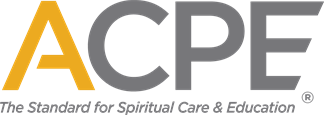Listening and Reflecting: Process Improvement
 As we wake up to the news of more deaths and violence during these challenging and painful days, I think about you and what you hold. The listening and presence you provide are the sources of healing. Holding tension and mystery is challenging when we carry our own grief.
As we wake up to the news of more deaths and violence during these challenging and painful days, I think about you and what you hold. The listening and presence you provide are the sources of healing. Holding tension and mystery is challenging when we carry our own grief.
I want to thank all the conference planning committee members and staff for an engaging annual event. I also want to thank all ACPE and APC members for their participation. Some of the richest moments at the conference were the question-and-answer sessions at the end of the plenaries. Thoughtful, provocative, engaged.
I also want to thank ACPE members for their participation in the member meeting. ACPE’s Board of Directors wants to connect with the membership. The board meets monthly, and the board’s executive committee meets weekly to conduct association business on your behalf. In that spirit, I thought it would be helpful to speak about some of the issues that came up in the listening sessions and the member meeting.
Accreditation came up as a topic in the member meeting. How did the new process come to be? To touch on this concern, I’d like to tell the story of how the current accreditation process grew from an idea to practice.
The current accreditation process started in discussions within the regional director’s group. In 2015, the regional directors brought a recommendation to the board to change our accreditation process. They described the “old” process as confrontational and inefficient. In 2016, the board appointed a workgroup chaired by John Pumphrey, including Rosalind Bradley, Carrie Buckner, Mary Catherine Cole, Randy Hall, Shawn Mai, Wayne Menking, Kent Schaufelberger, Mai-Anh Le Tran, and Cecilia Walker. Kimberly Yates and Marc Medwed supported the work as staff. The group met monthly (sometimes weekly) for three years. The workgroup regularly reported and was appropriately challenged by the board and the Accreditation Commission throughout the process until concluding its work in 2019 by creating the current accreditation process. The effort was initiated by educators, done by educators, and implemented by an implementation workgroup and the commission comprised of educators.
First, we thoroughly critiqued the former process. From the beginning, we valued moving from a confrontational relationship between accreditation and centers to a relational endeavor for demonstrating compliance while maintaining quality.
Second, we designed a simplified list of standards to guide the commission’s assessments. The former process had over 70 standards, not counting objectives and outcomes, often created to address one-time issues. We had a consensus on simplifying standards, but we wrangled with how to streamline the list while ensuring program integrity. In the end, we proposed seven standards that allow for creative expression about how one’s center meets the criteria.
Finally, we had to determine how centers would demonstrate their good work. The educators on the workgroup and commission quickly embraced the idea of online portfolios. An accessible portfolio makes engagement with accreditation an ongoing process and not just a scramble to put together materials every five or ten years. We had an intentional conversation about the educational ecology of ACPE, enhancing the important concept of the clinical rhombus.
The portfolio has also allowed accreditation issues to be addressed and resolved quickly. Real-time dialogue can happen between a center and a reviewer that creates space for issues to be fixed instead of the prolonged back and forth process in the “former” process. In some cases, non-compliance could take a year to be resolved in the “former” process. Most issues can be resolved in days or just a few months with more complex issues in the new approach. Also, with the portfolio model, every center has access to accreditation documentation, including new educators that join the center. This is particularly helpful for centers that struggle to find a new educator before the former educator leaves.
I am not technologically savvy. I’ve spent more hours than I’d like to admit trying to navigate SharePoint to organize my materials and learning to troubleshoot. It becomes even more irritating when I’m operating multiple technologies in my work as a department leader. Often, it can feel like I’m using SharePoint for the first time again. Am I signed in with my ACPE email or my organizational email? As we say in Minnesota, uff dah!
At these times, I’ve been grateful for having the right expertise in the ACPE office for doing our work in 2022. They are there to help. Plans are also in the works for a video tour and guide for the basics of using SharePoint.
As you move into the summer months, I hope you have time to rejuvenate, revitalize, and connect with those you love. Good self-care keeps us grounded to do this vital and challenging work. Thank you for the gifts you share with ACPE and the world. They are gifts needed in a suffering world.
Rev. Shawn Mai, ACPE Certified Educator at Park Nicollet Methodist Hospital in St. Louis Park, MN, serves as Chair of the Board of Directors. He may be contacted at shawn.mai@parknicollet.com
